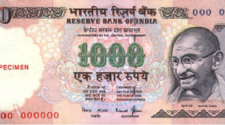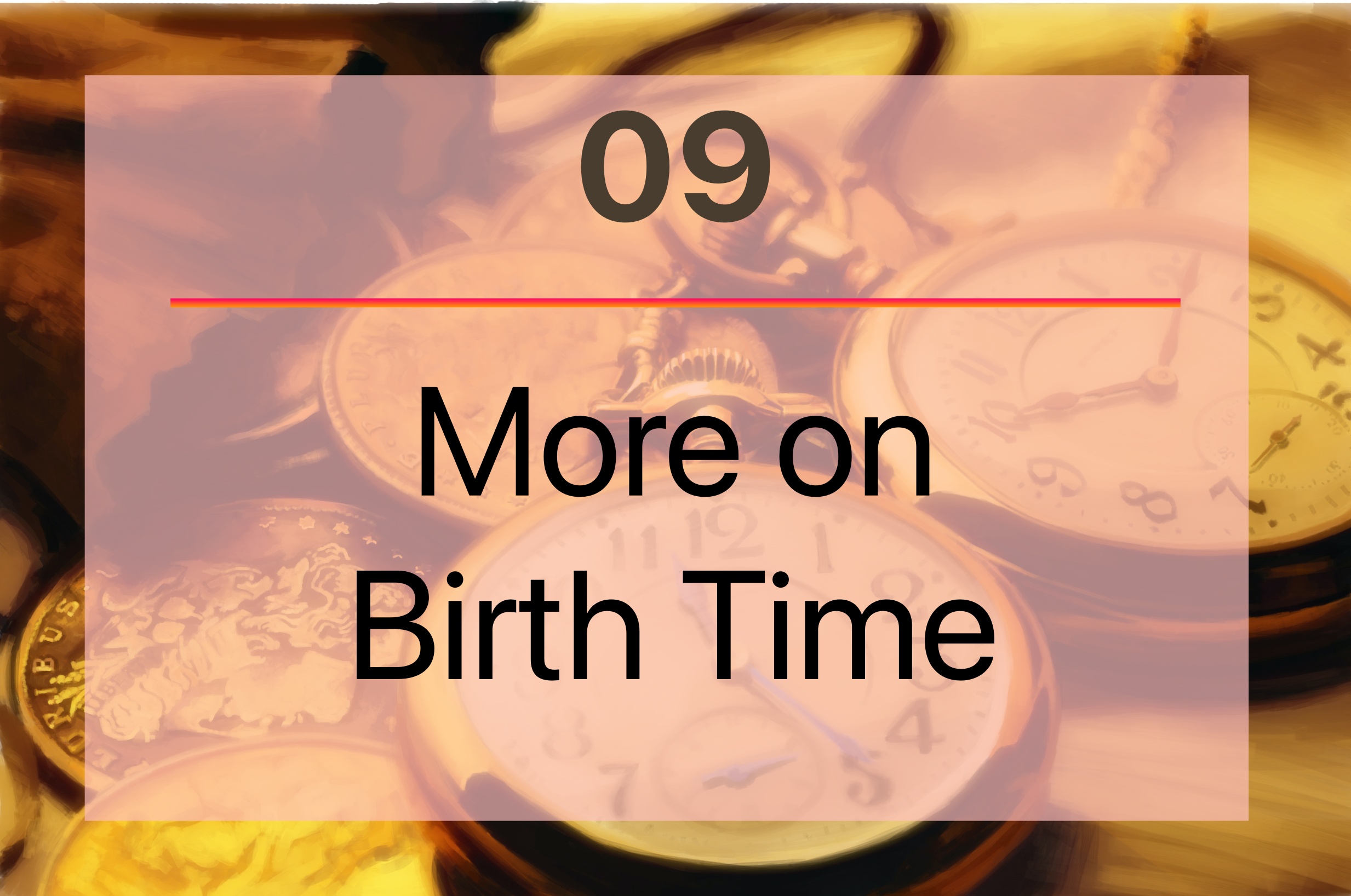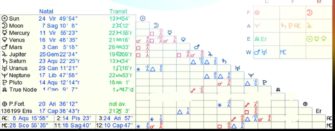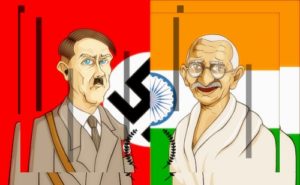This article is more of a reply to the comments on the previous article, which discussed the concept and importance of birth time in drawing a chart.
Time of birth (TOB) is an important detail one needs to begin with the chart. Even if the time is vague, missing, or just guessed, it plays its role. The Jyotishi does need something to work with; otherwise, it falls into the lost horoscope category.
In the birth concept article, We took the case of twins, who would be born in the same city, same hospital, the same day just a few minutes apart, yet will have different personalities and outcomes thanks to the difference of few minutes.
Let us take the case mentioned in article 9, say if two babies are born in the same city, same time but in different hospitals, then will they have the same birth chart? Are they to have the same destinies? Won’t their charts be identical? Yes, but that is the fallacy of forcing the simple linear science understanding on astrology’s complex subject. It is like testing advanced concepts, Ph.D. level Mathematics with nursery numbers. However logical it sounds, it is inept of logic.
Let us consider some concepts related to types of charts in a bit of detail before we address this case. The birth chart, called as Rashi chart, is the basic chart. This chart is denoted as the D1 chart, where the D means division. Thus the basic divisional chart is called D1, and the next would be D2, next D3 ..and so up to D150. As the name suggests, these divisional charts are a ‘division’ of the primary 30° (House). So D2 chart indicates each sign divided into two parts of 15° each. Similarly, D3 has three divisions of each sign =10°; it goes up to D150 now, we can do the math to find out how small the division will be.
Thus even if the basic D1 chart is identical, the degrees and minutes will be changing in these charts. Without studying these charts, any analysis is incomplete. Each chart gains weightage for specific spheres of life:
* like D9 (generally thought to be ONLY marriage) sheds light in Bhagya
* D16 -general happiness as in possessions
* D24- for education (spiritual connotation)
* D30 on Karm (curses, miseries) of family one is born
* D60 the whole aspect of one’s existence.
These charts have their role, yet a few aspects triumph over others; hence we have to study them before making any predictions. Of these, D9 and D60 have the highest value attached. Now, like mentioned earlier, by mathematical calculation, D60 has 0.30th of the D1 chart. Thus even if birth time has an error of half minutes, things can go astray.
Now back to our example of babies born same time, same city, same day. The vital thing to consider is the parents to whom they are born and the family they are born into. Pareesthiti of Desh Kaal Pareesthiti comes to the fore. Even an orphan has a family. The family Karm plays a massive role in the formative years. Jyotish says the soul decides what Karm setting it wants to achieve, and according to its assets of ‘Punya,’ it takes birth in a particular family. D30 can be used to study these things. The D1 charts appear to be the same; we need to consider the planets. However, slow they move, they do move. A slight change in degree will result in a different dosh/yog. We do not study any one planet in isolation; We have to see them as a package deal and must be studied holistically. A planet in particular degree in a specific sign is always influenced by other planets. There are aspects, trinal relations, and similar considerations. Each results in multitudes of combinations of results.
The positions of planets cast its impact also define their strength, as in power they gain. A planet in its own sign is considered strong (there are specific units of measurements for this), and the Planet in the enemy sign may be weak or in a position of discomfort. All this is quantifiable; there are calculations to achieve the right strengths. There is the concept of exaltation and debilitation of planets in particular signs. Saturn is exalted in sign if Libra at 20°, and goes in debilitation exactly in Aries at 20°. When Saturn is in Libra, it is generally considered exalted. The closer to 20° the exaltation rises, so does Saturn’s strength (I must remind the reader that exaltation/debilitation is just one of the many strength calculation factors). Thus when a planet is entering a sign, leaving, or is at a particular degree, it has a role to play. There are points like Ganda, combustion that impart strength or deprive strength of planets like these points. A Planet moving towards exhalation may give auspicious results with complete autonomy; one Planet moving towards debility may not be able to deliver good results; this is how we judge planets.
To the question, are not the patterns /permutations of planets fixed and destined to be repeated? Jein! (I love this word). As planets move in 360f a circle, there are bound to be repetitions at their specific speed. At face value, it may appear so, but the ‘exact’ chart repetition never happens. A dosh/yog may repeat, like the Mangal Dosh, or Kaal Sarp Dosh(article in progress), Gajkesari, PanchMahapurush, etc. In the example of Shri Ram’s chart, it has Gajkesari yog, which is also present in many other charts of many famous and even obscure people. One effect of this yog is fame until eternity. That applies to Shri Ram’s chart, but not in many other charts where this yog forms. The participants of this yog are Jupiter and Moon when they are in specific relation, which is the two planets are in a quadrant from each other. Nevertheless, that is not even scratching the surface; there are many nuanced aspects to be studied before proclaiming the Gajkesari yog.
Hitler and Mahatma Gandhi had the same ascendant, the most crucial house and sign, and we know who took what path. A few charts may repeat, but all the planets reaching the very identical degree minutes and seconds are impossible. Though it may appear planets do occupy the same degree of same signs as that of someone from history, one cannot forget the concept of Desh Kaal and Pareesthiti.
Say someone has the same planetary combination like that of Hitler or Mahatma Gandhi, but they are born in different times, different places, and accounts for a lot. Earth’s precision has a role to play, which acts when we make the basic calculations when we calculate planets’ degrees. Despite all these, one does hear astrologers say, “Wah! You have great Lakshmi Yog, just like Amabani” Now millions of people have Lakshmi Yog and even same as that of Ambanis, but not all are rich as they are. Each Yog has its strength, so if there is a weak Yog, technically it is Yog, but it cannot give all the riches. Buttering the clients like any other vocation is also part of astrology; Chatukarita is one of the business’s basics, after all.
All in all, things in astrology are not linear, despite their appearance. One cannot do away with Desh Kaal Paristhiti’s conditions. With time and practice, an astrologer can make mental calculations in regards to the various D charts. That is the nature of how we draw them. With time, all one needs to see the basic D1 chart and quickly make mind maps of which Planet is in a house in the Dn chart. The same goes for the degrees of exaltation, debility, and so on. The challenge is to bring this all together to make a proper judgment about a Planet and its results.
















Article after a long time!!
the whole D150 charts thing sheds a new light on astrologers who read a chart in minutes, not sure if they are going into such depths. I might take a savant to visualize all charts in one go, co-relate and analyze in minutes.
So this means a “Samantar” (https://idiagress.com/vinaaypatil/2020/11/28/samantar/) kind of situation can occur only in a fictional world, not the real world !
“No man steps in the same river twice”
In Indian terms though the soul is born many times, but it never lives the same life again and again, that would be antithesis to Karm philosophy.
after all YOLO bhi koi cheeeez hain !!